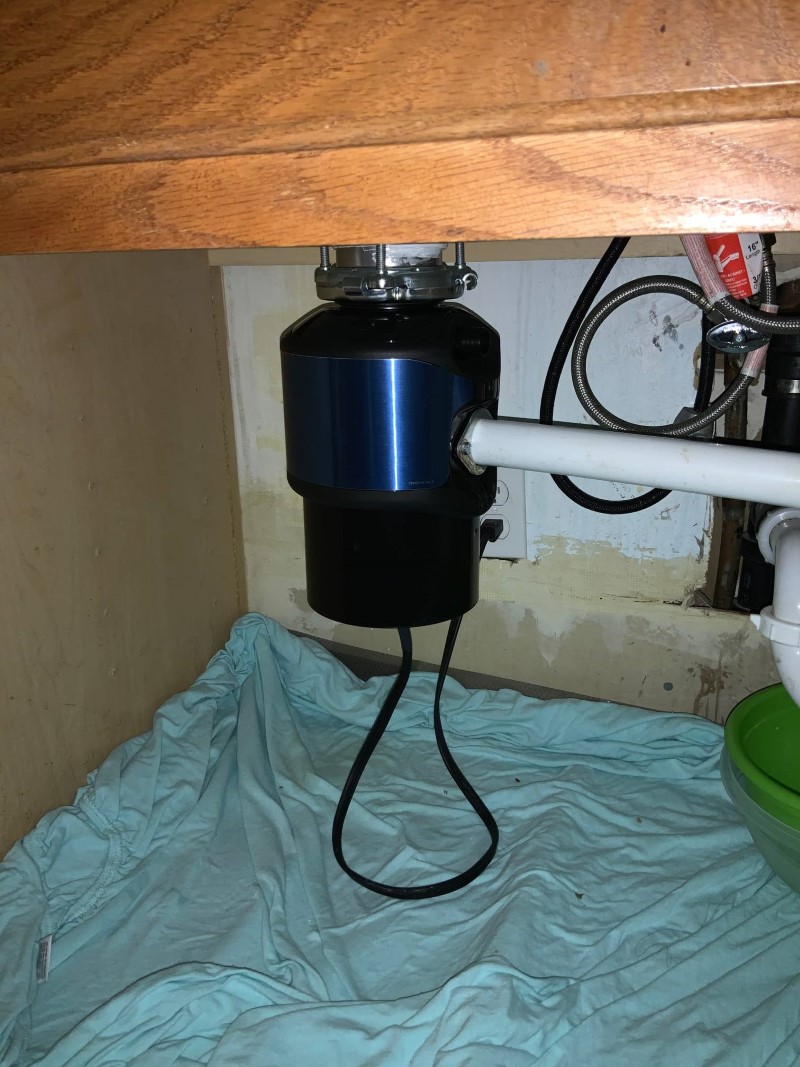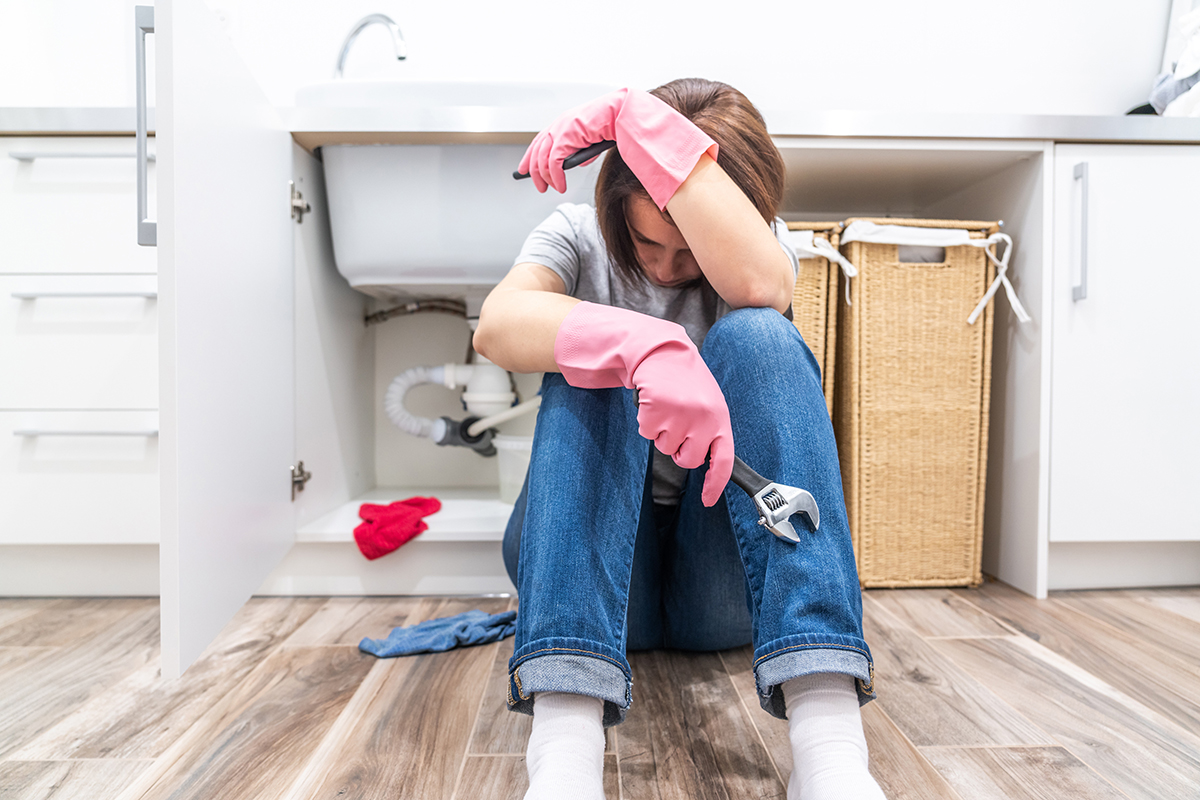They are making a few great annotation on the subject of How to fix a pretty consistent leak from my garbage disposal as a whole in the article down below.

Garbage disposals are vital kitchen home appliances that help in dealing with food waste successfully. However, a leaking waste disposal unit can be an irritating and unpleasant problem to manage. Fortunately, numerous leakages can be fixed easily with a couple of simple actions. In this write-up, we will talk about just how to fix a dripping garbage disposal efficiently.
Introduction
Waste disposal unit are mounted under cooking area sinks and are designed to shred food waste right into smaller items, allowing it to go through the plumbing system conveniently. While these tools are typically reliable, leaks can occur with time due to deterioration, loose connections, or damages to the device.
Common Reasons For Leakages in Rubbish Disposals
Worn Seals and Gaskets
Seals and gaskets play a crucial function in protecting against water from dripping out of the waste disposal unit. In time, these components can degrade, leading to leaks around the disposal system.
Loose Links
The connections between the waste disposal unit and the pipes system can end up being loose over time, creating water to leakage out throughout operation.
Cracks or Holes in the Disposal System
Physical damages to the waste disposal unit, such as fractures or holes in the housing, can additionally lead to leaks.
Determining the Source of the Leakage
Before attempting to take care of a dripping waste disposal unit, it is necessary to recognize the resource of the leak. This can normally be done with visual inspection or by conducting simple examinations.
Visual Assessment
Check the waste disposal unit device very carefully for any kind of indications of water leak. Pay very close attention to areas around seals, gaskets, and link factors.
Evaluating for Leakages
One method to test for leaks is by running water through the disposal unit and checking for any type of visible indicators of leak.
Tools and Products Needed for Repairing a Dripping Waste Disposal Unit
Before starting the repair work procedure, gather the necessary devices and products, including a screwdriver, adjustable wrench, plumbing's putty, substitute seals or gaskets, and epoxy or patching product for fixing splits or openings.
Step-by-Step Overview to Dealing With a Dripping Waste Disposal Unit
Switch off the Power
Before trying any repair work, make sure that the power to the garbage disposal system is turned off to avoid the danger of electric shock.
Locate the Leakage
Determine the exact place of the leakage and establish the reason.
Tighten up Connections
Utilize a wrench to tighten up any loosened connections in between the disposal unit and the pipes system.
Change Seals or Gaskets
If the leak results from used seals or gaskets, eliminate the old components and change them with brand-new ones.
Patching Splits or Openings
For splits or openings in the disposal system, usage epoxy or an appropriate patching material to seal the broken area.
Evaluating the Garbage Disposal After Repair Service
When the fixing is full, test the waste disposal unit by running water with it to ensure that the leakage has actually been dealt with.
Preventive Upkeep Tips to Prevent Future Leaks
To avoid future leaks, it is essential to carry out regular maintenance on your waste disposal unit. This consists of keeping it clean, staying clear of placing non-food products or difficult things down the disposal, and periodically checking for leaks or other problems.
Conclusion
To conclude, fixing a dripping waste disposal unit is a reasonably straightforward process that can be finished with fundamental tools and materials. By following the actions outlined in this short article and exercising preventative maintenance, you can keep your waste disposal unit in good working problem and avoid expensive repair services in the future.
HERE’S HOW TO FIX YOUR GARBAGE DISPOSAL
WHAT TO DO IF SOMETHING IS STUCK IN YOUR GARBAGE DISPOSAL
If the impeller won’t turn, there’s probably something stuck in the disposal. It could be a steak bone or peach pit, although plumbers report pulling all sorts of inappropriate objects out of disposals, such as bottle caps or aluminum foil. Make sure power to the disposal is off, and look inside to see if you can see the source of the jam.
Never stick your fingers in a disposal. Pull out anything you see with tongs or pliers.
If the disposal still won’t work, it may be time to call a plumber or consider buying a new disposal. GEM Plumbing & Heating is here for all of your garbage disposal needs.
WHAT TO DO IF YOUR GARBAGE DISPOSAL DRAIN IS CLOGGED
Take everything out from underneath your sink and put a bucket or other container under your disposal to catch any water that drains out. Disconnect your disposal from the power supply. If it’s plugged into a wall outlet, unplug it. If it’s hardwired into an electrical box, go to the electrical panel and turn off the breaker for the disposal. Pour ¼ cup of baking soda into the drain, followed by ½ cup of white vinegar. Give the solution a few minutes to fizz and do its work. Look into the disposal with a flashlight to see if you can see an object that might be causing the clog. If you see it, remove it using tongs or pliers. MORE TIPS ON DEALING WITH A CLOGGED GARBAGE DISPOSAL
Never use drain cleaner in a garbage disposal. It can damage the plastic parts inside the disposal. You can also be splashed with the caustic liquid while working to clear the clog. Beware! Never stick your fingers into a garbage disposal. Trust us — not a good idea. In many instances, your dishwasher drains through your garbage disposal. This allows the disposal to grind any large food particles that may be drained out of your dishwasher. There are some jurisdictions, however, where the plumbing code prohibits such a connection. WHAT TO DO WHEN YOUR DISHWASHER DRAINS THROUGH THE DISPOSAL
Run some water in the sink so your plunger has at least a ½-inch of water to create a seal and plunge vigorously up and down several times. You may need to repeat this several times. Run hot water down the drain to clear any residue that remains.

As a passionate reader about Garbage Disposal Leaking From Bottom, I think sharing that information was smart. In case you enjoyed our blog entry kindly be sure to pass it around. Many thanks for your time. Come back soon.
Go Deal Now